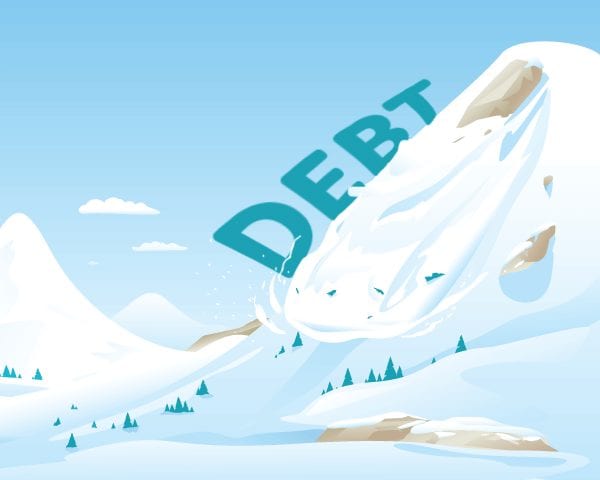U.S. household debt has been rising since 2013. As of Q3 2023, it had reached $17.29 trillion. Just last year, the average American held $101,915 in debt.
If you want to get your debt under control, now is the time. The longer you wait, the more you’ll owe. Consult a debt relief attorney for professional help, or learn two of the most popular debt repayment methods: the debt avalanche and the debt snowball.
Both are accelerated debt repayment plans that can help eliminate debt, but which is better? Read on to find out!
The debt avalanche method
The debt avalanche method, aka debt stacking, involves paying off debt with the highest interest rate first, moving on to the debt with the next highest interest rate, and so on until you’re debt-free.
In practice, this means making payments on all your outstanding bills but using whatever extra money you have to pay down the loan with the highest interest rate.
Here’s an example. Say you have $10,000 in credit card debt at a 24% interest rate, a $5,000 car loan at a 3% interest rate, and $25,000 in student debt at a 4% interest rate. In this scenario, you would pay off the credit card first, then the student loan, and finally the car loan.
The benefit of the debt avalanche method is that it requires paying less interest overall and can be the fastest road to becoming debt-free.
The downside is that it requires real discipline and commitment because it takes longer to see your progress. You’ll need to be internally motivated to keep with it.
The debt snowball method
The debt snowball method involves paying off your smallest loan and then working up to the biggest one. Essentially, you’re tackling the easiest debt first.
To do this, list your oustanding loans in order of size, and then work your way down the list in terms of where you allocate your extra money.
In the previous scenario where you have $10,000 in credit card debt at a 24% interest rate, a $5,000 car loan at a 3% interest rate, and $25,000 in student debt at a 4% interest rate, you’d pay off the car loan first, then the credit card, and finally the student loan.
The benefits of the debt snowball method are that you can pay off your first debt faster, which can increase your motivation to keep going. You see results faster.
On the downside, the snowball method does not reduce the total cost of interest as much as the snowball avalanche method can, and it may take slightly longer to complete the avalanche method.
The final verdict
At the end of the day, whether you pursue the debt avalanche or debt snowball method depends on your unique financial circumstances and personality. The debt avalanche method can save you more money in the long run, but sticking to it may not be realistic.
In contrast, the debt snowball method could help motivate you to keep reducing your debt, but you’ll end up paying more interest. Consider your strengths and weaknesses and weigh the pros and cons of each method carefully to know what’s right for you.
Either way, you want to pay off your debt as soon as possible, especially if you have high interest rate credit card debt. Becoming debt-free can help you avoid major financial setbacks and free up funds to put toward savings and investing.
Ultimately, any debt repayment plan is better than none.





Be First to Comment